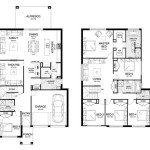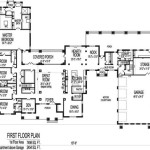How Much Is a 2-Bedroom House? A Comprehensive Guide to Pricing Factors
Determining the price of a 2-bedroom house is a multifaceted process influenced by a wide array of factors. Unlike readily available commodities with fixed prices, real estate value is highly variable and contingent upon location, size, condition, market trends, and a host of other considerations. This article aims to provide a comprehensive overview of the various elements that contribute to the price of a 2-bedroom house, offering potential buyers and sellers a better understanding of the market dynamics at play.
The demand for 2-bedroom houses is consistently strong, driven by diverse demographics including young professionals, small families, retirees looking to downsize, and investors seeking rental properties. This consistent demand typically supports the value and marketability of these homes. However, navigating the market effectively requires a thorough understanding of the factors that influence pricing.
Location, Location, Location: The Prime Determinant
It is a real estate cliché, but the adage holds true: location is paramount in determining the price of a property. The geographical location of a 2-bedroom house exerts a significant influence on its value. Houses situated in desirable neighborhoods, metropolitan areas, or regions with strong economic growth tend to command higher prices than those located in less sought-after areas. This price differential is often attributable to factors such as proximity to employment centers, quality of schools, access to amenities, and overall desirability of the area.
Proximity to urban centers often translates to higher property values due to increased job opportunities, cultural attractions, and entertainment options. The convenience of urban living, coupled with the limited availability of housing in these areas, drives up demand and subsequently, prices. Conversely, houses located in rural areas or less developed regions may be more affordable, but may also offer fewer amenities and employment opportunities. The accessibility of transportation infrastructure, such as highways, public transportation, and airports, also contributes to the overall desirability and value of a location.
The quality of schools in a given area is another major driver of property values, particularly for families with children. Houses located within highly-rated school districts tend to command premium prices, as parents are willing to pay more for access to better educational opportunities. Conversely, houses located in areas with struggling schools may be less desirable and therefore, lower in value. The presence of parks, green spaces, and recreational facilities also contribute to the desirability of a neighborhood, affecting property values positively.
Safety and security are also crucial considerations. Areas with low crime rates and a strong sense of community tend to be more desirable and thus, more expensive. Buyers are often willing to pay a premium for the peace of mind that comes with living in a safe and secure environment. Furthermore, local economic conditions play a significant role. Areas with thriving local economies, characterized by job growth and investment, typically experience higher property values.
Size, Condition, and Features: Internal Influences
Beyond location, the physical attributes of a 2-bedroom house significantly impact its price. The square footage of the house, the condition of the building, and the presence of desirable features all contribute to its overall value. Larger houses, naturally, are generally more expensive because they offer more living space. However, the layout and functionality of the space are also important considerations. A well-designed house with an efficient floor plan can be more appealing than a larger house with a poorly designed layout.
The condition of the house is a critical factor. Houses that are well-maintained and in good repair tend to command higher prices than those that require significant renovations or repairs. Buyers are often willing to pay a premium for a move-in ready property, as it saves them the time, expense, and hassle of undertaking major repairs. A recent renovation, particularly of the kitchen and bathrooms, can significantly increase the value of a house. Conversely, deferred maintenance, such as a leaky roof, outdated plumbing, or a failing HVAC system, can lower the value. A thorough home inspection is crucial to identify any potential issues that could affect the price of the property.
The presence of desirable features can also significantly impact the price of a 2-bedroom house. These features may include a garage, a finished basement, a fenced yard, a swimming pool, or energy-efficient appliances. Houses with these amenities tend to be more appealing to buyers and therefore, can command higher prices. The type of materials used in the construction of the house and the quality of the finishes also play a role. Houses with high-end finishes, such as hardwood floors, granite countertops, and stainless steel appliances, tend to be more valuable than those with lower-quality materials.
Furthermore, the age of the house can influence its value. Older houses may have historical character and architectural charm, but they may also require more maintenance and repairs. Newer houses, on the other hand, may offer more modern amenities and energy efficiency, but may lack the character of older homes. The architectural style of the house can also play a role, with certain styles being more popular and desirable than others.
Market Conditions and Economic Factors: External Pressures
External market conditions and the overall economic climate exert a powerful influence on the price of a 2-bedroom house. Interest rates, unemployment rates, inflation, and general economic growth all play a role in shaping the real estate market. When interest rates are low, borrowing money to buy a house becomes more affordable, which can increase demand and drive up prices. Conversely, when interest rates are high, borrowing becomes more expensive, which can dampen demand and put downward pressure on prices.
Unemployment rates also affect the real estate market. When unemployment is high, people are less likely to buy houses, as they may be concerned about job security. This can lead to a decrease in demand and lower prices. Conversely, when unemployment is low, people are more likely to buy houses, as they feel more confident about their financial future. This can lead to an increase in demand and higher prices. Inflation can also impact the real estate market. When inflation is high, the cost of building materials and labor increases, which can drive up the price of new houses. This can also affect the prices of existing houses, as sellers may try to pass on their increased costs to buyers.
The overall economic growth of a region or country also plays a role. Areas with strong economic growth tend to have higher property values, as people are more likely to move to these areas for job opportunities. This increased demand can drive up prices. Furthermore, government policies, such as tax incentives for homebuyers or regulations on development, can also affect the real estate market. Tax incentives can encourage people to buy houses, while regulations on development can limit the supply of new housing, which can drive up prices.
The supply and demand balance in the local market is a critical factor. In a seller's market, where there are more buyers than houses available, prices tend to rise. In a buyer's market, where there are more houses available than buyers, prices tend to fall. The number of days a house has been on the market can also be an indicator of market conditions. Houses that sell quickly often indicate a strong seller's market, while houses that linger on the market may indicate a buyer's market.
Ultimately, determining the price of a 2-bedroom house requires a comprehensive analysis of these interconnected factors. Consulting with a real estate professional, conducting thorough market research, and obtaining a professional appraisal can provide valuable insights and help buyers and sellers make informed decisions. The real estate market is dynamic, and prices can fluctuate over time, so it's important to stay informed and adjust strategies accordingly.

12 Simple 2 Bedroom House Plans With Garages Houseplans Blog Com

2 Bedroom House Plans Monster

12 Trending 2 Bedroom House Plans Craft Mart

Popular 2 Bedroom Bath House Plans The Designers

12 Trending 2 Bedroom House Plans Craft Mart

2 Bedroom House Plans Floor Designs Houseplans Com

2 Bedroom House Plans Dream Home Source

Cost Of Building A 2 Bedroom Complete Off Grid House With Solar And Borehole

Popular 2 Bedroom Bath House Plans The Designers

Best Selling 2 Bedroom House Plans 968 Sq Feet Or 90 M2 Etsy








